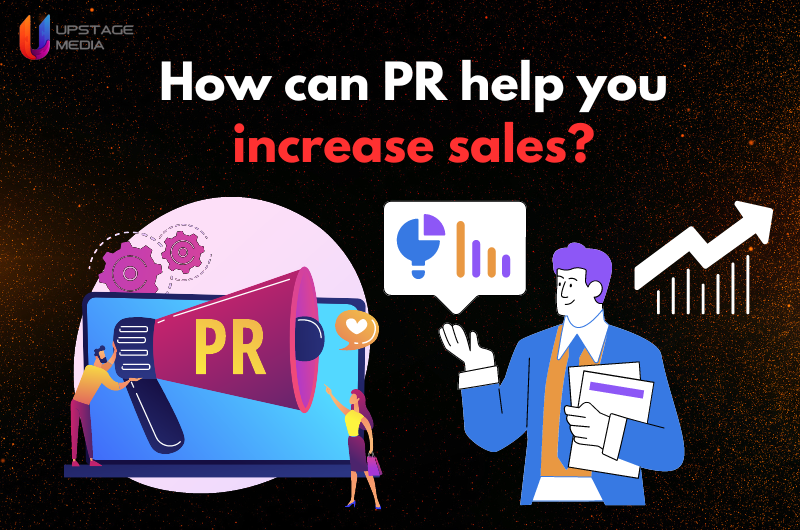Table of Contents
Business is changing with every passing day. Marketing and PR for Personal Brand aren’t separate anymore. Marketing used to be about selling stuff, PR was about making the company look good. Now, they have to work together. The PRCA says that PR is essential for businesses to get their message out, show off, and make a good impression.
PR is very important in business today. It helps deal with issues of reputation and company sales. A company can be great at coming up with new ideas. But if it can’t communicate well, the sale struggles, giving rivals the chance to step in. So, it’s very important to look closely at how your company is trying to sell things by communicating with people. This mix of tactics helps improve both reputation and revenue.
Importance of PR for Product Sales:
Public Relations (PR) isn’t just for managing crises or reputations anymore. It’s key in building trust, a vital part of a successful brand. PR uses careful plans to help companies grow their reputation over time. It makes sure each win, each happening, enriches the brand.
PR is all about sharing what the brand represents, reaching out to like-minded groups, and starting up dialogues that matter. Additionally, PR joins up smoothly with marketing efforts, adding useful details that match bigger marketing plans.
The power of PR reaches even into how money moves, giving startups budget-friendly ways to make their brand known. PR does more than managing social media and building loyalty and trust.

Enhance the Organic Presence of Your Brand:
In a world where websites, blogs, emails, and ads rule, Public Relations (PR) shines. It smoothly bonds with these tools, boosting natural growth. Blogs and ads get your brand’s name out there, PR methods enhance it through active social media and earn media.
Earned media is made by customers, followers, bloggers, or journalists. It extends beyond your own channels, using trusted sources to boost credibility. When PR aligns with your existing methods, it creates a powerful combo. This lifts your brand while gaining trust from your audience.
So, mixing Public Relations with your online plans makes a power combo, lifting your brand’s image. By using blogs and ads to start a buzz, then boosting it with regular social media chat and good press, your brand stands out genuinely. This team effort sparks expansion and also lays down a base of trust with your crowd, making your brand’s spot secure in the cutthroat online world.
Key Drivers Behind a Purchase Decision:
In the dance of customer actions, insights into why they buy is critical for businesses wanting to succeed in fierce markets. The trek from thinking to buying is shaped by loads of elements.
Figuring out these elements is key to making effective marketing and Public Relations (PR) strategies. The decisions customers make are often guided by a mix of feelings, sharp messages, trust-growing efforts, and the overall image of a brand.
In this exploration of why people buy, we’ll explore the mind-focused and tactical parts that push customers to prefer one product or service over another.

1. Create a Positive Emotional Response That Links To Your Brand
Great PR offers useful tips or counsel, expecting nothing in return. By offering real help to customers, PR projects spark positive feelings, linking those feelings to the brand. The goal is to boost awareness, trust, and tell the truth. If customers think your advice is worth sharing then your brand gets seen by more people.
A killer PR game plan does more than just sell-it builds a warm emotion. By helping customers without asking for a quick payback, your brand ties itself to goodwill and trust. This feel-good vibe spreads when advice is shared, naturally making your brand visible to more people.
2. Get Your Targeting Spot-on
The right PR strategy, for companies or shoppers, uses every dollar of the budget wisely. By spotting the key traits of customers, like their age, sex, job, and likes, you can group your audience in different levels. Strategic planning helps focus PR work on potential buyers.
By deeply understanding the specifics of the industry, knowing the decision-makers, and learning about current challenges, B2B companies can direct their PR and marketing funds to the places where they have the biggest impact. Simply put, a focused, targeted plan makes sure resources are used effectively to achieve clear results.
3. Make Your Message Clear
Strong PR and marketing plans depend on clear messages. They provide a guide for how a brand communicates. Without a clear message, the whole strategy becomes unclear, making it hard to build relationships between the brand and customers.
Having a session to work out the messaging is key to identifying important parts like the company’s identity, what it offers, and how it provides value in a unique way. These central messages then become the foundation for all future PR and marketing efforts, making sure the brand speaks with one, resonant voice.
Build Trust and Reputation
Having a distinct audience and a smart game plan is important in PR. The next step includes effective chat through familiar media titles for better brand status. Good content that includes press releases think pieces, case reports, news tie-ins, award entries, and speaker chances helps get the audience involved.
This fits great with ad plans, making sure your paid ads, webinars, events, and social media blasts hit the mark. The rule is about seven brand meetings before a sale. A full PR plan gives regular, different touch points for the best audience tie-in.

Measure and Set Objectives
Evaluating these factors through the lens of website traffic growth and SEO enhancement offers key reflections on PR work and how audiences react. We know that PR help increase sales as well as it significantly contributes to a larger marketing strategy.
Amazing business narratives and thought leadership establish robust reputations and shape views. They gently feed the sales process and are key in guiding buying choices. In the PR world, success can be clearly counted.
When website visits spike and SEO thrives, PR evolves from a single sales tool into a key piece in the larger marketing puzzle. Telling a great business story and leading thoughtfully are what make your reputation solid and influence shopping choices, guiding the path of success.
Collaborating for Authentic Endorsements
Working together with top people in your field can really power up your PR game. Real thumbs-ups from them bring some serious street cred to any brand. They’re people everyone else looks up to. It’s all about making honest connections – where the endorser and brand share the same beliefs.
These real voices bring the heat for the brand, making it credible and well-known with their own people. This kind of honest popularity has the power to not only make brands famous, but also get people to buy more! And it does it in a way that speaks to the people.
Develop Engaging Content
In the fast-paced online world, making gripping content is key to successful Public Relations (PR). Knowing the vital role of content, PR work should focus on making stuff that not only grabs attention but is also easily passed around.
By telling gripping stories and using different content types, from articles to images, brands can make themselves trusted leaders in their fields. This not only builds expert status but also raises customer curiosity.
Paying close attention to making content that hits home with viewers not only boosts brand presence but also grows a solid bond, setting the brand as a trusted source and boosting its clout online.
Measure and Analyze PR Impact on Sales
It’s important to gauge PR’s effect on sales. We use strong analytical tools for this. They measure how far and how well PR campaigns reach and engage. They also tells us how they impact sales. Looking at these figures gives companies a clear idea of their PR strength.
The ‘reach’ of a campaign shows how many people know about it. Engagement tells us how much people interact with it. But, the key is conversion rates–they show us the actual effect on sales. Using this data, businesses can improve their PR plans. They can stay flexible and keep up with shifts in the market for continued success.
Conclusion:
In the swift world of sales and marketing, Public Relations (PR) proves to be a crucial friend. It offers firms a mighty tool to master the changing terrain. Recognizing PR’s crucial part in boosting product sales, businesses can harness the strength of Digital PR. Crafting catchy content that speaks to your audience boosts your brand’s visibility. Measuring the effect of your PR is key. This allows you to tweak and improve strategies for ongoing growth. Navigating the complex world of digital means using PR strategies is a must.
A powerful PR strategy is all about being truthful, strategic, and taking careful steps, setting the stage for long-term success. Whether it’s using digital channels to reach out or creating stories that bring about positive feelings, businesses can use PR not just as a backup but as fuel for success in today’s business world.
